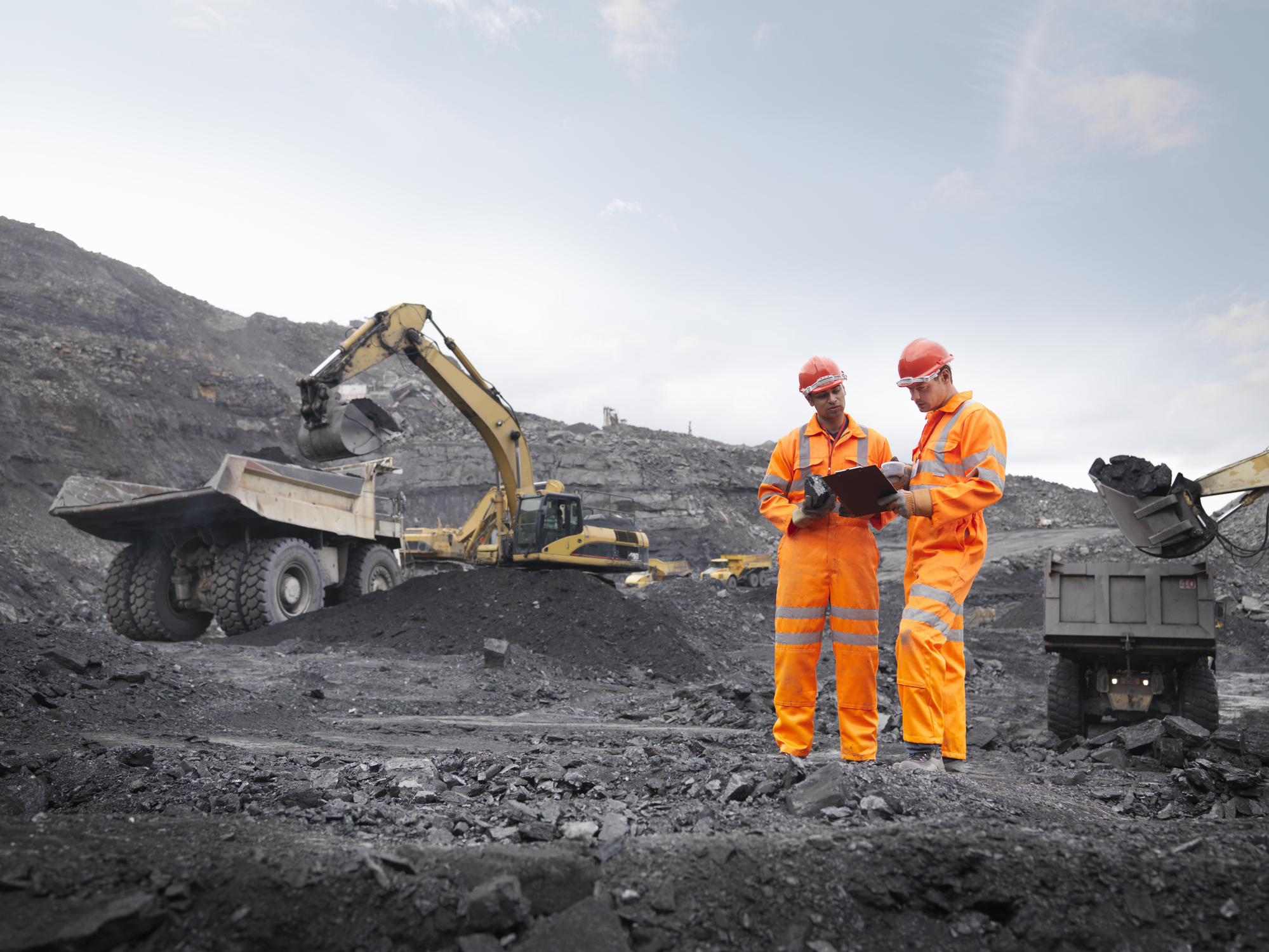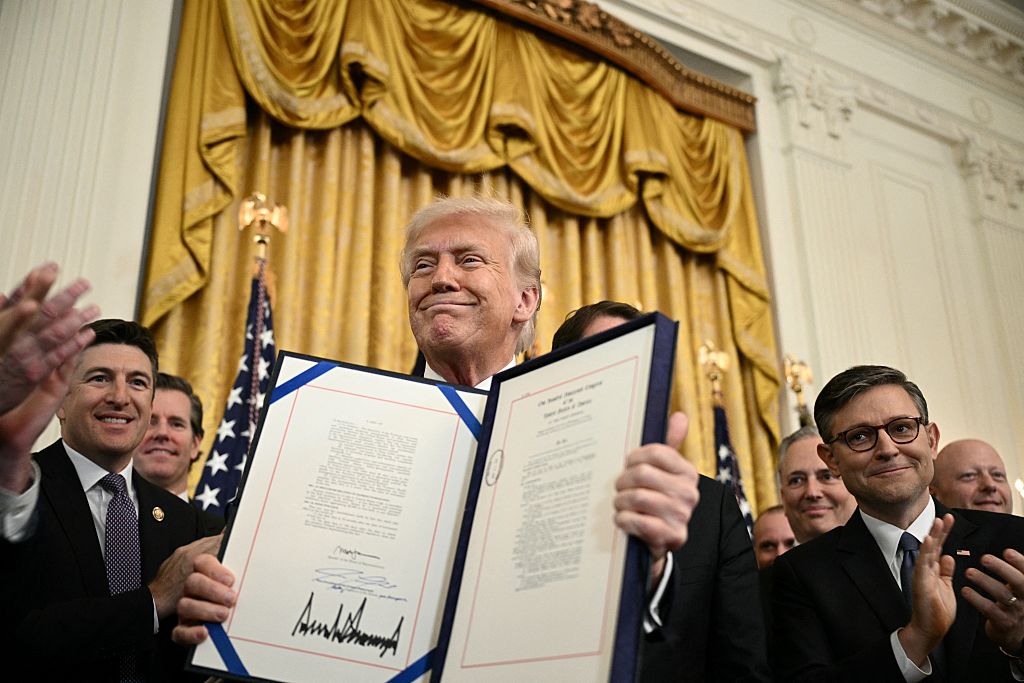How to make a mint from the next mining boom
Avoid the metals producers and invest in companies with the tools and technology to help the sector boost output and reduce its environmental footprint.


The mining sector has a mixed reputation when it comes to its impact on the environment and investors’ wallets. As Mark Twain (who promoted and invested in the industry) said, “A mine is a hole with a liar on top”. But there is no denying that modern life requires the metals and minerals the sector extracts from the ground – especially given the demands of the energy transition. The good news is that changes in technology, especially with respect to satellites, artificial intelligence (AI) and automation, are transforming the efficiency and sustainability of the industry, as well as creating investment opportunities that do not depend on the success of an individual mine or project.
Net zero is turbocharging demand
The global economy has always relied on a steady supply of metals and minerals to provide the raw materials for the goods we buy. But Olivia Markham, co-manager of the BlackRock World Mining Investment Trust, thinks that demand is about to be turbocharged by the drive to reduce carbon emissions. She notes that the adoption of low-carbon technologies will play a key part in most countries’ efforts to achieve net zero. For example, one of the key measures of 2022’s Inflation Reduction Act in the United States, was a $7,500 tax credit aimed at encouraging people to buy electric cars. The adoption of such technologies will in turn increase the need “for the mined commodities that are required”, says Markham. These include the lithium used in batteries, copper in the motors, wiring and in charging stations and other rare-earth minerals. She thinks that, if anything, the market is underestimating the speed at which our need for such commodities will grow. This boom in demand will be particularly powerful as it arises in the context of recent underinvestment by mining companies, who have focused on “paying down debt, reducing costs and returning capital” instead of building new mines, creating “a mismatch between supply and demand”.
Mark Smith, joint fund manager of the WS Amati Strategic Metals Fund, also sees the energy transition leading to a “considerable” increase in demand, until at least the end of the decade. While demand will then start to slow as electric cars become the norm, the time taken to build mines means there could be a large gap between supply and demand.
MoneyWeek
Subscribe to MoneyWeek today and get your first six magazine issues absolutely FREE

Sign up to Money Morning
Don't miss the latest investment and personal finances news, market analysis, plus money-saving tips with our free twice-daily newsletter
Don't miss the latest investment and personal finances news, market analysis, plus money-saving tips with our free twice-daily newsletter
Efficient exploration
The think tank Energy Transitions Commission suggests that there could be especially acute shortages in both lithium and graphite, key materials used in the batteries powering electric vehicles. The gap between the amount of lithium needed and the amount available could be as big as “30% of annual demand by 2030”, while the supply deficit for graphite “may end up being 40% of demand”.
The need to mine more rare-earth minerals isn’t just an economic imperative, but also a matter of national security, says Amy Law of mining and construction equipment platform MachineMax, with governments “creating policies, legislation and strategic alliances to try to secure supply”.
I was recently in the audience at a panel discussion at the conference Mines and Money: Resourcing Tomorrow. All five panellists agreed that owing to Sino-US tensions, all major Western countries are eager to reduce their dependence on China, which currently accounts for around half the global supply. In particular, they pointed to the EU’s Critical Raw Materials Act, as well as the measures in the American Bipartisan Infrastructure Law that made it easier for mines in the US to get a permit. The upshot is that “as long as China is seen as a threat”, Western governments will be “eager to boost the amount of rare-earth metals mined”, says Christopher Ecclestone of Hallgarten & Company. While these tensions may eventually disappear, this process will take between 15 and 20 years to play out, enough to provide a tailwind to production in the short and medium term.
It’s hard for experienced investors to work out who’s real and who’s not.
Christopher Ecclestone
Of course, as Ecclestone told me afterwards, just because the overall conditions for the industry are favourable, backing individual mining companies isn’t necessarily the best way to take advantage of the boom.
“With over 1,600 companies that claim to be miners listed on the Toronto Stock Exchange alone, many of which have no intention of ever digging a hole, it’s hard for experienced investors to work out who’s real and who’s not.”
What’s more, exploration is hardly a straightforward process, with even established companies finding it hard to gauge if a site has potential. However, there is now a wide array of new technologies that can help improve the efficiency of the exploration process. These range from satellites to drones. While none of this technology can definitively identify whether metals or rare earths are in the ground, deploying several processes can nevertheless yield a helpful level of detail, says Ecclestone.
For instance, some companies now use satellites to identify particularly promising areas. Once these are pinpointed, they then use industrial drones that can be programmed to fly close enough to the ground to search for the weak magnetic signals emitted by underground deposits. All these surveys necessitate sifting through huge amounts of data, which is time-consuming, expensive and involves a degree of subjectivity. Fortunately, advances in AI can help accelerate the process.
One firm at the forefront of this shift is software company Four Point. Four Point’s platform uses machine learning to “integrate data from surveys carried out as far back as the 19th century with readings from satellites”, says the firm’s CEO Marek Wilgucki. This includes biomarkers that are easily missed, “such as flowers changing colour, which may indicate the presence of nickel”, he says. Finally, its software enables companies to add data from closer field analysis to produce a model of any deposits underneath the ground, and how they should look. This will “tell them if it’s worth drilling, and exactly where they should drill”, says Wilgucki. He claims that Four Point’s software is up to 92% accurate in determining whether there are nickel deposits, rising to 96% in the case of copper – which is far greater than the industry standard of 80% accuracy. This helps reduce the risk involved in a project and of wasting resources on marginal prospects.
Automation has the potential to improve efficiencies and costs by 10%-15%
Mark Smith
Delegating digging
More accurate exploration is only one part of the process in securing an ample supply of rare-earth metals. Even once deposits are identified and confirmed, working mines face “multiple challenges” which mean they may struggle to “translate demand into higher profitability”, says Ole Hansen, head of commodity strategy at Saxo Bank. These include higher input prices, such as dearer fuel, electricity and labour. Hence technologies that can help cut operational costs once the actual mining starts, either by increasing labour productivity or improving efficiency, are needed more than ever.
Given these constraints, it is no surprise that the mining industry is starting to turn to automation as the technology improves, with advances in robotics leading “to a step change”, says Smith.
For example, nowadays “it is not hard to find several automated mining trucks operated by one person sitting in a city office”, although he cautions that automating underground operations will be a little more complicated. Overall, he thinks that automation of operations has the potential to “improve efficiencies and costs by 10%-15%”, which could make the difference between a mine making or losing money.
Even where automation is already standard, there is potential for improvement. An example of this is in processing, which extracts usable commodities from the raw material taken from the ground.
While most processing plants have been automated since the 1990s, traditional advanced process control systems still have several drawbacks, says Konstantin Kiselev, CEO of automation start-up Conundrum. Firstly, they tend to focus on controlling only one, or a handful, of variables. They also break down the processing operation into several separate parts. This means that if the mine decides that it wants to optimise a certain element, it needs to spend a lot of time and money resetting the system, “and in many cases it may not be possible”. By contrast, Conundrum’s system focuses on controlling a much wider range of variables. It also uses machine-learning technologies to enable different parts of the system to communicate with each other and intelligently work together to ensure an optimal outcome. Not only can this help save millions of dollars and boost overall output, but it can also give the firm much more flexibility, “so it could decide that it wants to switch from maximising output to cutting energy costs, or extending the lifespan of its machines”.
This last point is particularly important, “as not all miners necessarily want to just get the maximum output”, says Mat Matthews, Conundrum’s chief revenue officer. Australian miners in particular are concerned about their energy costs as well as reducing the need to replace their equipment, a big consideration “when you are in the outback days away from major population centres”. Overall, Matthews estimates that Conundrum’s AI-driven systems can boost efficiency by up to 7%, increase yield by around 8% and increase the earnings before interest, taxes, depreciation and amortisation (EBITDA) of a typical tier-1 mine (large, relatively low-cost ones with a long lifespan) by around $60m a year.
Going green
Despite mining’s role in making the development of electric cars and other low-carbon technologies possible, many investors still feel queasy about investing in the sector, says Markham.
Unless mining companies reduce the environmental impact of their operations, most of the environmental benefits of these low-carbon technologies will be negated. It’s not just a case of doing the minimum to avoid punishment. Companies that can show they have cleaned up their act “will benefit from re-ratings, as the market is willing to pay higher valuations for lower sustainability risks”.
The good news is that many of the cutting-edge technologies now used during the exploration process can be repurposed to help companies monitor the environmental impact of their operations.
The Swiss software company Picterra uses data from satellites, aeroplanes, balloons and drones to produce high-resolution images of the surrounding area next to a mine “sometimes at resolution down to millimetres”, says Frank de Morsier, Picterra’s chief technology officer. Picterra then deploys an AI model trained to measure a range of environmental impacts – including not just carbon emissions, but also water pollution, soil pollution, and the impact on the wildlife and biodiversity of nearby areas – in 95% less time than it would take to conduct manual measurements in the field. De Morsier says companies have rapidly been embracing Picterra’s technology, “especially since many of them already use drones and satellites”. Like Markham, he also notes that regulation is forcing companies to be more aware of the impact they have, while many of them also “want to anticipate future changes to the rules, and are actively trying to be the best in their peer group”. Picterra’s technology can also be applied to health and safety, with one company hiring Picterra to produce accurate maps of the mine’s emergency roads, while another has used it to measure the cracks along nearby geological features.
AI has a key role to play in helping firms monitor their “mine tailings”, the often toxic waste material produced from the mining process. While mines are supposed to ensure that these tailings are properly stored so that they don’t leak out into the nearby area, many firms don’t do this properly, says Reijo Pold, founder and chief strategy officer of Value. Space, another geoimaging start-up. The consequences of this can be catastrophic, with the Brumadinho dam disaster in January 2019 costing 270 lives, as well as wiping $19bn off the share price of Vale SA, which ran the mine.
While insurers can insist on manual checks of major tailings, the process can take weeks, or even months, can prove costly, and “may not be fully accurate if the mine is large”. Given no fewer than 13 catastrophic failings are expected in the next four years, Pold describes the risk posed by tailing as “the equivalent of subprime mortgages for the mining industry”. In this context, Value.Space’s imaging and analysis service, which again applies AI to satellite data to estimate the risk of a collapse, “is increasingly cost-effective for both companies and insurers”. We should, in short, expect to see “a lot more of this technology in the future”.
This article was first published in MoneyWeek's magazine. Enjoy exclusive early access to news, opinion and analysis from our team of financial experts with a MoneyWeek subscription.
Read more
- This contrarian indicator suggests we’re at the bottom of the mining cycle
- Mining stocks – is it time to sell?
- Should you buy this mining trust?
- How to invest in copper, the most important metal in the world
Get the latest financial news, insights and expert analysis from our award-winning MoneyWeek team, to help you understand what really matters when it comes to your finances.

-
 ‘Why I have ditched my Help to Buy ISA for cash savings and the stock market’
‘Why I have ditched my Help to Buy ISA for cash savings and the stock market’Without the 25% bonus, my Help to Buy ISA is effectively redundant, says MoneyWeek writer Sam Walker.
-
 Is your inheritance tax allowance cut if you sell to downsize or sell your home to pay for care?
Is your inheritance tax allowance cut if you sell to downsize or sell your home to pay for care?Downsizing relief is a little-known benefit that could save your loved ones tens of thousands of pounds in inheritance tax after you’ve died.
-
 Stock markets have a mountain to climb: opt for resilience, growth and value
Stock markets have a mountain to climb: opt for resilience, growth and valueOpinion Julian Wheeler, partner and US equity specialist, Shard Capital, highlights three US stocks where he would put his money
-
 The steady rise of stablecoins
The steady rise of stablecoinsInnovations in cryptocurrency have created stablecoins, a new form of money. Trump is an enthusiastic supporter, but its benefits are not yet clear
-
 SRT Marine Systems: A leader in marine technology
SRT Marine Systems: A leader in marine technologySRT Marine Systems is thriving and has a bulging order book, says Dr Michael Tubbs
-
 Goodwin: A superlative British manufacturer to buy now
Goodwin: A superlative British manufacturer to buy nowVeteran engineering group Goodwin has created a new profit engine. But following its tremendous run, can investors still afford the shares?
-
 A change in leadership: Is US stock market exceptionalism over?
A change in leadership: Is US stock market exceptionalism over?US stocks trailed the rest of the world in 2025. Is this a sign that a long-overdue shift is underway?
-
 A reckoning is coming for unnecessary investment trusts
A reckoning is coming for unnecessary investment trustsInvestment trusts that don’t use their structural advantages will find it increasingly hard to survive, says Rupert Hargreaves
-
 Metals and AI power emerging markets
Metals and AI power emerging marketsThis year’s big emerging market winners have tended to offer exposure to one of 2025’s two winning trends – AI-focused tech and the global metals rally
-
 8 of the best houses for sale with beautiful fireplaces
8 of the best houses for sale with beautiful fireplacesThe best houses for sale with beautiful fireplaces – from a 15th-century cottage in Kent to a 17th-century palazzo in Oxfordshire